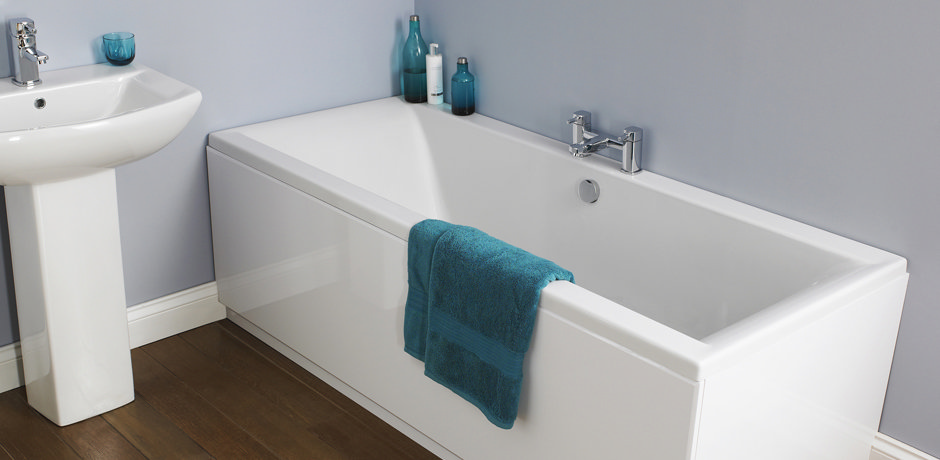Are you currently searching for advise on Installing A Bathtub?

Mounting a bathtub isn't precisely brain surgery, yet it does require strong plumbing, woodworking, and also sometimes, tiling abilities. Changing an old bath tub with a brand-new one is additionally a reasonably hard task. If the old bathtub is conveniently accessible, the project can move rapidly; if you need to open a wall to remove the old tub and also place the brand-new tub, the job is much harder. In either situation, the project is within a home handyman's abilities, although you will certainly require an assistant to vacate the old bathtub as well as set in the new one. Ensure you have actually certified yourself for the task and fit attempting it. Rather than working with a professional to take over a halfway-completed task, it is better to take into consideration utilizing one before you start. Chances are you might need an expert plumber to make tube connections.
This write-up will aid you install a brand-new bathtub in your shower room if you have actually already gotten a brand-new tub and also don't need to transform the arrangement of your previous water system pipelines.
Your devices as well as product list must comprise the following:
Removing Old Taps
If you require to replace old faucets with new ones as a part of your installation, then the first thing you should do is detach the water supply. After doing so, switch on the faucets to drain pipes any type of water continuing to be in the system. The process of eliminating the existing faucets can be fairly problematic due to the restricted gain access to that is usually the situation.
Make use of a container wrench (crowsfoot spanner) or a tap device to undo the nut that links the supply pipes to the taps. Have a fabric all set for the continuing to be water that will come from the pipelines. When the supply pipelines have been gotten rid of, use the exact same tool to loosen up the nut that holds the taps onto the bath/basin. You will certainly need to stop the solitary faucets from turning during this procedure. Once the taps have actually been eliminated, the holes in the bath/basin will certainly have to be cleaned up of any old sealing compound.
Before proceeding to fit the new faucets, contrast the pipeline connections on the old taps to the new taps. If the old taps are longer than the brand-new faucets, then a shank adapter is needed for the brand-new taps to fit.
Fitting New Touches
If the tails of the new faucets are plastic, after that you will need a plastic port to prevent damages to the string. One end of the connector fits on the plastic tail of the tap and also the various other end supplies a connection to the existing supply pipes.
If you need to fit a monobloc, after that you will call for reducing couplers, which connects the 10mm pipeline of the monobloc to the common 15mm supply pipe.
Next, place the faucet in the mounting hole in the bath/basin ensuring that the washers are in location between the faucet and the sink. Safeguard the faucet in place with the maker supplied backnut. When the faucet is securely in place, the supply pipelines can be attached to the tails of the taps. The faucets can either be attached by utilizing corrugated copper piping or with typical tap ports. The former type needs to be linked to the faucet ends initially, tightening just by hand. The supply pipes can later on be linked to the various other end. Tighten up both ends with a spanner after both ends have been linked.
Installing the Bath tub
Utilizing the two wood boards under its feet, put the bathtub in the required position. The wood boards are handy in equally spreading the weight of the bathtub over the area of the boards rather than focusing all the weight onto 4 small factors.
The following objective is to guarantee that the tub is leveled all round. This can be attained by checking the level as well as changing the feet on the bath tub until the spirit level reviews degree.
To mount faucets, fit all-time low of the outermost versatile faucet port to the appropriate supply pipe by making a compression sign up with; after that do the same for the other tap.
Switch on the supply of water and also inspect all joints and brand-new pipework for leakages as well as tighten them if necessary. Fill up the bath tub and additionally inspect the overflow outlet as well as the regular outlet for leakages.
Ultimately, deal with the bathroom paneling as described in the manufacturer's instruction manual. Tiling and also sealing around the bath tub must wait until the tub has actually been used at the very least once as this will certainly settle it right into its last setting.
Planning for the Setup
To start with, the sustaining structure supplied with the bathroom needs to be fitted (if required) according to the maker's guidelines. Next, fit the taps or mixer to the tub. When suitable the tap block, it is necessary to make sure that if the tap includes a plastic washing machine, it is fitted in between the bathroom and also the taps. On a plastic bath, it is likewise practical to fit a sustaining plate under the faucets device to stop pressure on the bath tub.
Fit the adaptable faucet adapters to the bottom of both faucets making use of 2 nuts and also olives (occasionally provided with the bathtub). Fit the plug-hole electrical outlet by smearing mastic filler round the sink outlet hole, and then pass the electrical outlet via the hole in the bathroom. Make use of the nut supplied by the producer to fit the plug-hole. Examine the plug-hole electrical outlet for an inlet on the side for the overflow pipeline.
Next, fit completion of the versatile overflow pipe to the overflow electrical outlet. Afterwards, screw the pipe to the overflow face which should be fitted inside the bathroom. See to it you make use of all of the provided washers.
Attach the trap to the bottom of the waste outlet on the bath tub by winding the string of the waste outlet with silicone mastic or PTFE tape, as well as screw on the trap to the electrical outlet. Connect the bottom of the overflow tube in a similar manner.The bath need to currently be ready to be suited its final setting.
Tiling Around the Bath tub
In the area where the bath satisfies the ceramic tile, it is needed to seal the accompanies a silicone rubber caulking. This is necessary as the installation can relocate enough to fracture a stiff seal, causing the water to pass through the wall in between the bath and also the tiling, leading to issues with wetness and also feasible leaks to the ceiling listed below.
You can select from a variety of coloured sealers to assimilate your components and also fittings. They are sold in tubes as well as cartridges, and are capable of securing voids up to a width of 3mm (1/8 inch). If you have a bigger gap to fill, you can fill it with twists of soaked newspaper or soft rope. Remember to always fill up the bathtub with water before sealing, to enable the motion experienced when the bathtub remains in usage. The sealer can split relatively early if you do not consider this activity prior to sealing.
Conversely, ceramic coving or quadrant ceramic tiles can be made use of to border the bath or shower tray. Plastic strips of coving, which are easy to use and also cut to dimension, are likewise quickly readily available on the market. It is suggested to fit the ceramic tiles making use of waterproof or waterproof sticky and also grout.
Bathtub Installation
How Important Is A Bathtub To Your Home?
High-quality baths, showers, and other bathroom updates are necessary when considering a smart investment in your home. It’s a room that you go to every day and one that is constantly being used by guests.The bathroom is one of the top trafficked rooms in a home and also one of the most valuable in terms of home resale.
Install Piping Before Tub
You will be using your existing drain and waste vent system, but pipes required include the hot and cold water supply lines and a pipe leading to a shower head. A mixing valve and shower head are also needed. Air chambers may be required.
Position the Tub
Lower the tub into place so that the continuous flange fits against the wall studs and rests on 1’x4' or 2’x4' supports. Anchor the tub to the enclosure with nails or screws inserted through the flanges into the studs.
NOTE: Remember, bathtubs and shower stalls may require support framing. A bathtub filled with water is extremely heavy, so check building codes and framing support before installing the tub.
Assemble Drain Connections
Assemble the bathtub drain connections by connecting the tub overflow with the tub drain above the trap, not beyond it. The trap will have a compression fitting that screws over the arm of the overflow assembly.
Place a Pipe For the Shower Head
First, locate a brass female threaded winged fitting and attach it to a framing support via a screw or a nail. Then run a pipe up the wall for the shower head. Sweat or solder the other side of the brass fitting to the top of the pipe.
Attaching Hot and Cold Water Lines
Attach your water lines for both hot and cold by sweating these directly into the hot and cold ports of the mixing valve. The mixing valve will be how water enters the tub’s system, not by the pipes themselves.
Install the Spout
Extend a piece of 1/2 inch pipe, or whichever length is specified in the manufacturer’s instructions, for the tub spout. Sweat on a male threaded fitting at the end of the pipe or use a brass nipple of the proper length and a 1/2 inch cap.
NOTE: At this point you should have your rough-in plumbing work inspected before proceeding further.
Check For Leaks
Restore the water pressure and check the drain connection and the supply pipes for any sign of leaking.
estore the Bathroom Wall
Replace the wall with moisture-resistant drywall as a base for your wall covering. Seal the joints between the wall and your new tub with silicone caulk as protection against water seepage.
https://www.berkeys.com/2016/12/02/bathtub-installation-dallas/

I am very excited about How to Install a Bathtub Yourself and I am praying you liked the new blog entry. Sharing is nice. Helping others is fun. Thanks for your time spent reading it.
Best choice? Dial.
 Ariana Richards Then & Now!
Ariana Richards Then & Now! Talia Balsam Then & Now!
Talia Balsam Then & Now! Elisabeth Shue Then & Now!
Elisabeth Shue Then & Now! Raquel Welch Then & Now!
Raquel Welch Then & Now! The Olsen Twins Then & Now!
The Olsen Twins Then & Now!